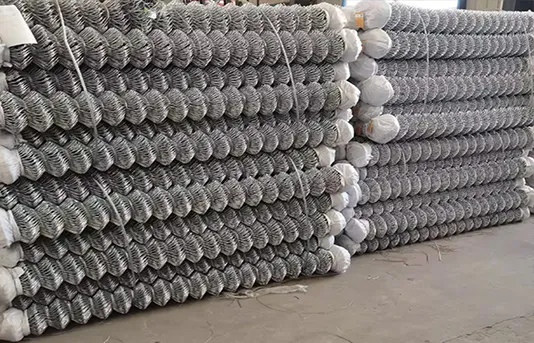-
 Phone:
Phone: -
 Email:
Email:

hexagonal wire mesh sizes
Understanding Hexagonal Wire Mesh Sizes
Hexagonal wire mesh is a versatile and widely-used material in various industries, including agriculture, construction, and fencing. Its unique hexagonal pattern offers strength and flexibility, making it ideal for a range of applications. Understanding the sizes available for hexagonal wire mesh is crucial for selecting the right type for a specific project.
Defining Hexagonal Wire Mesh
Hexagonal wire mesh, often referred to as hex mesh or chicken wire, consists of thin wires twisted together to form a hexagonal pattern. This design provides excellent structural integrity while allowing for the passage of air and light. The mesh is typically made from galvanized steel or stainless steel, enhancing its durability and resistance to corrosion.
Common Sizes of Hexagonal Wire Mesh
Hexagonal wire mesh comes in various sizes, which can be categorized based on the diameter of the wire, the size of the openings, and the overall width of the roll
.1. Wire Diameter The diameter of the wire used in hexagonal mesh typically ranges from 0.5mm to 2.5mm. Thicker wires provide greater strength and are suitable for heavier applications, such as livestock enclosures or structural support. In contrast, thinner wires are often used for lighter applications, like gardening or crafting.
2. Size of Openings The size of the mesh openings can significantly affect the material's application. Common opening sizes include 25mm, 50mm, and 100mm, measured from one wire to the opposite wire. Smaller openings are ideal for applications where small animals or pests need to be contained, while larger openings work well for applications such as fencing or general mesh use, where visibility and airflow are desired.
hexagonal wire mesh sizes

3. Roll Width Hexagonal wire mesh is generally sold in wide rolls, with common widths being 1 meter, 1.2 meters, and 1.5 meters. The choice of roll width depends on the scale of the project; larger rolls are more economical for extensive fencing or netting applications, while smaller rolls may be sufficient for gardening or home projects.
Applications of Hexagonal Wire Mesh
With its various sizes and strengths, hexagonal wire mesh finds use in numerous applications. In agriculture, it is often used for poultry enclosures to keep chickens safe from predators while allowing sufficient airflow and light. In construction, it can be employed as a reinforcement material in concrete walls or as a barrier in building projects. Additionally, hexagonal wire mesh is used in landscaping for erosion control, creating garden beds, and even as decorative features.
Choosing the Right Hexagonal Wire Mesh Size
Selecting the appropriate size of hexagonal wire mesh is critical to achieving the intended results. Factors to consider include the type of animals or objects being enclosed, environmental conditions, and the specific application requirements. For instance, when constructing a fencing system for larger animals, opting for a thicker wire and smaller openings ensures durability and security. Conversely, for decorative or light gardening purposes, a lighter gauge with larger openings may suffice.
Conclusion
In conclusion, understanding hexagonal wire mesh sizes is essential for anyone involved in projects that require this flexible material. By considering the wire diameter, opening size, and roll width, you can make informed decisions that contribute to the success of your project. Whether you are a farmer, contractor, or DIY enthusiast, the proper application of hexagonal wire mesh can help you achieve effective results in your endeavors.
-
Wire Mesh for Every Need: A Practical SolutionNewsJul.25,2025
-
Steel Fences: Durable, Secure, and Stylish OptionsNewsJul.25,2025
-
Roll Top Fencing: A Smart Solution for Safety and SecurityNewsJul.25,2025
-
Cattle Farm Fencing Solutions for Maximum SecurityNewsJul.25,2025
-
Affordable Iron Binding Wire SolutionsNewsJul.25,2025
-
Affordable Galvanized Wire SolutionsNewsJul.25,2025
-
Wire Hanger Recycling IdeasNewsJul.25,2025








